Malacca Travel - Malaysia, Southeast Asia
Malacca City, also known as Melaka, is a historical city in Malaysia renowned for its rich cultural heritage and colonial architecture. Approximately 148 km (92 miles) south of Kuala Lumpur and has been designated as a UNESCO World Heritage Site since 2008 due to its rich historical and cultural significance blend of Malay, Chinese, Indian, Portuguese, and Dutch influences, making it a vibrant destination for travelers seeking to explore its diverse history.
Population Estimate 500,000 (as of 2020)
Economy: Malacca offers a unique blend of historical significance, cultural diversity, and modern economic development, making it an intriguing destination to explore Southeast Asian heritage and contemporary urban dynamics. Malacca's economy is predominantly centered around tourism. As a UNESCO World Heritage site, the city attracts both domestic and international tourists interested in its rich history and cultural heritage.
Landmarks: A' Famosa, Porta de Santiago, Stadthuys, Christ Church, St. Paul's Church, Malacca Sultanate Palace, Maritime Museum, Jonker Walk, Dutch Square
Malaysia
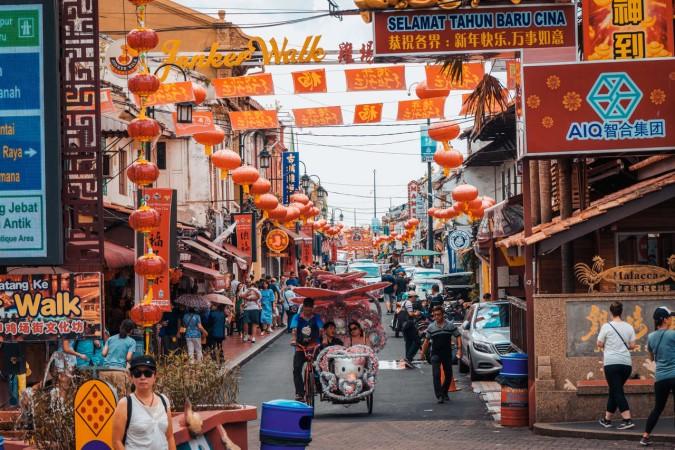
Overview of Malacca
History & Cultural Influence
Malacca's history dates back to the 15th century when it was a prominent Malay Sultanate under Sultan Parameswara. Its strategic location along the Malacca Strait made it a vital trading port, attracting merchants from across Asia and Europe. This position facilitated cultural exchanges and economic prosperity, laying the foundation for its diverse cultural landscape.
The city experienced several colonial periods, beginning with the Portuguese conquest in 1511. The Portuguese built the A Famosa fortress, marking the start of European influence in the region. In 1641, the Dutch seized control, leaving a lasting impact on Malacca's architecture, exemplified by the Stadthuys and Christ Church. The British later took over in the 19th century, further shaping the city's development and preserving many historical structures.
Malacca's cultural identity is a fusion of Malay, Chinese, Indian, and European elements. The city is renowned for its Peranakan or Baba Nyonya culture, which emerged from the intermarriage of Chinese immigrants with local Malays. This cultural blend is evident in Malacca's cuisine, architecture, and festivals.
Interaction with The Locals
Experience the warmth and diversity of Malacca, a city where rich cultural heritage meets modern hospitality. With a population of over 1 million, Malacca is a melting pot of ethnic groups, including Malays, Chinese, Indians, and unique communities like Baba Nyonya and Kristang. This multicultural blend shapes the city’s customs, festivals, and cuisine, offering travelers a truly immersive experience.
Communication is easy, as many locals speak English, along with Malay, various Chinese dialects, Tamil, and even Kristang—a Portuguese creole. Visitors will find the locals friendly and eager to share their cultural heritage, especially in the bustling city center and popular tourist spots.
To fully appreciate Malacca’s unique atmosphere, explore the lively Jonker Walk night market, savor local dishes at hawker centers, and visit neighborhoods like Little India and Chinatown. Remember to dress modestly, ask permission before taking photos, and respect local customs, such as removing shoes before entering religious sites.
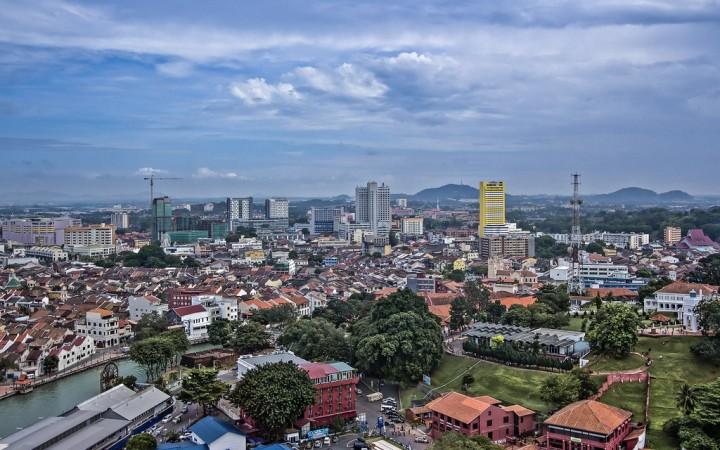
Melaka cityscape - © Sam Gao
Top attractions in Malacca
Malacca is rich in history and culture with top attractions like the iconic red Stadthuys, a former Dutch colonial building now housing the History and Ethnography Museum. Visitors can explore the vibrant Jonker Street, famous for its night market and antique shops, or visit the ruins of St. Paul’s Church atop St. Paul’s Hill for stunning views of the city and the Straits of Malacca. The A’ Famosa fortress and Malacca River Cruise offer further glimpses into the city’s colonial past and scenic beauty.
Stadthuys
Location: Dutch Square, Bandar Hilir
The Stadthuys, built in 1650, is a well-preserved Dutch colonial building in Malacca, known for its striking red exterior. Once the administrative center and residence for Dutch governors and officers, it is now home to the History and Ethnography Museum. The museum showcases Malacca’s rich history, featuring exhibits on the Portuguese, Dutch, and British periods, as well as local customs and traditions, giving visitors an in-depth look at the city’s past.
St. Paul’s Church
Location: Jalan Kota, Bandar Hilir
Built by the Portuguese in 1521, St. Paul’s Church is one of the oldest church ruins in Southeast Asia. It sits atop St. Paul’s Hill, offering panoramic views of the city and the Straits of Malacca. The church’s ruins include the ancient tombstones of Dutch nobles and a statue of St. Francis Xavier, who once preached at the site. Despite being in ruins, it remains a significant landmark that reflects Malacca's religious and colonial history.
Jonker Street
Location: Jalan Hang Jebat
Jonker Street is the cultural hub of Malacca’s Chinatown, famous for its bustling night market. The street is lined with antique shops, boutiques, art galleries, and cafés, providing a lively atmosphere. On weekends, the night market offers local street food, souvenirs, and live performances, making it a popular spot for both locals and tourists. The street also boasts historical architecture, including Chinese temples and heritage buildings.
A' Famosa
Location: Jalan Parameswara, Bandar Hilir
A' Famosa is a fortress built by the Portuguese in 1511, and its most famous remnant is the Porta de Santiago gate. It is one of the oldest surviving European architectural structures in Southeast Asia. A' Famosa once stood as a massive fortification, symbolizing Portuguese colonial power in the region. Today, only the gate remains, serving as a historical landmark that represents Malacca’s layered colonial history.
Baba Nyonya Heritage Museum
Location: 48–50, Jalan Tun Tan Cheng Lock
The Baba Nyonya Heritage Museum offers a glimpse into the Peranakan (Straits Chinese) culture that blends Chinese and Malay traditions. Housed in a beautifully restored townhouse, the museum features intricately designed furniture, ceramics, and personal artifacts from the Peranakan community. Visitors can explore the unique blend of architectural styles, interior decor, and cultural heritage that shaped the lives of the Baba Nyonya families in Malacca.
Taming Sari Tower
Location: Jalan Merdeka, Bandar Hilir
The Taming Sari Tower is a revolving observation tower standing 110 meters tall, offering panoramic views of Malacca city and the surrounding coastline. The tower rotates as it ascends, giving visitors a 360-degree view of key landmarks such as St. Paul’s Hill, the Malacca Strait, and the iconic A’ Famosa fortress. It's a popular spot for visitors who want to take in the city’s sights from a unique vantage point.
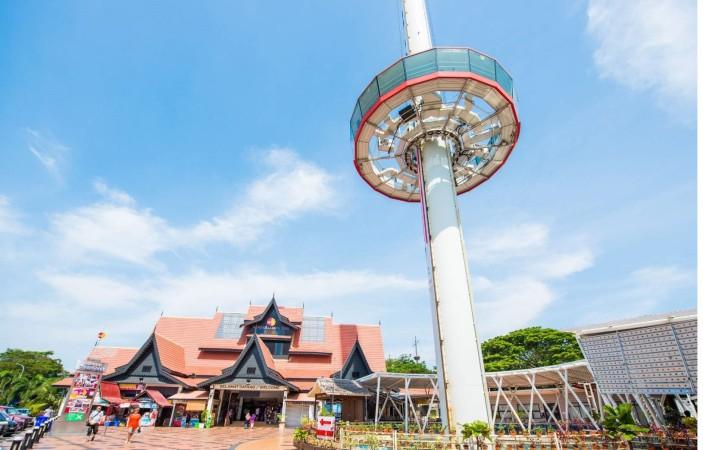
Taming Sari Tower - © gather
Must-Try Dishes in Malacca
When visiting Malacca, don’t miss the chance to try Chicken Rice Balls, a local twist on traditional chicken rice where the rice is shaped into bite-sized balls, adding a unique texture. Another must-try is Nyonya Laksa, a flavorful Peranakan dish made with coconut milk, spices, and noodles, offering a delicious blend of Chinese and Malay flavors. For dessert, indulge in Cendol, a refreshing sweet treat made with shaved ice, coconut milk, palm sugar, and green rice flour jelly.
Nyonya Laksa
If you’re a fan of rich, spicy soups, Nyonya Laksa is a must-try. This Peranakan noodle soup is packed with flavor, thanks to its coconut milk curry base infused with lemongrass, chilies, and shrimp paste. You’ll often find it loaded with rice noodles, prawns, fish cakes, tofu puffs, and sometimes a hard-boiled egg on top. The combination of sweet, spicy, and tangy flavors is a true reflection of Malacca’s fusion of Chinese and Malay influences. Once you try it, you’ll understand why this dish is so beloved.
Chicken Rice Balls
One of Malacca’s iconic dishes is Chicken Rice Balls, and it’s not just the taste that makes it special—it’s the presentation. Instead of the usual Hainanese chicken rice, you get tender, flavorful chicken served with rice shaped into small, compact balls. Cooked in savory chicken broth, the rice balls are soft yet firm enough to hold together, making each bite a perfect little package. Don’t forget to dip them in the accompanying chili sauce and soy sauce for an extra kick of flavor. If you’re in town, places like Kedai Kopi Chung Wah are famous for serving this local delicacy.
Cendol
After a long day of exploring Malacca’s streets, you’ll want something refreshing, and cendol is the perfect answer. This dessert is a bowl of shaved ice drizzled with creamy coconut milk and sweetened with gula Melaka—a type of palm sugar that gives it a rich, caramel flavor. On top, you’ll find green pandan-flavored jelly noodles, and sometimes red beans or sweet corn. Some places even add durian for an extra layer of flavor. It’s the perfect treat to cool down and recharge on a hot day.
Asam Pedas
If you love bold flavors, you’ll want to try asam pedas. This spicy and tangy fish stew is a favorite in both Malay and Nyonya kitchens. The star of the dish is tamarind, which gives it that signature sourness, balanced by a kick of chili heat. Mackerel is commonly used, though you might also see stingray or snapper depending on where you go. It’s typically served with steamed rice, and trust me, the combination of sour, spicy, and savory is absolutely mouthwatering.
Nyonya Kuih
When it comes to snacks or desserts, Nyonya kuih is a feast for both the eyes and the taste buds. These colorful, bite-sized treats are made from glutinous rice flour, coconut milk, and palm sugar, and they come in a variety of shapes and flavors. Whether it’s the layered goodness of kueh lapis or the pandan-rich kueh talam, each one offers a unique taste experience. You’ll often see these beautiful treats during festivals or tea time, but honestly, they’re perfect any time of day.
Roti John
If you’re craving a hearty street food snack, look no further than roti john. This tasty sandwich is made with a baguette that’s sliced open, filled with a mixture of minced meat (usually chicken or beef), onions, and eggs, then grilled to perfection. What makes roti john so special is how it’s finished off—with a generous drizzle of mayonnaise, chili sauce, and sometimes even cheese. It’s the perfect blend of Western-style fast food with a local twist, and you’ll find it hard to stop at just one!
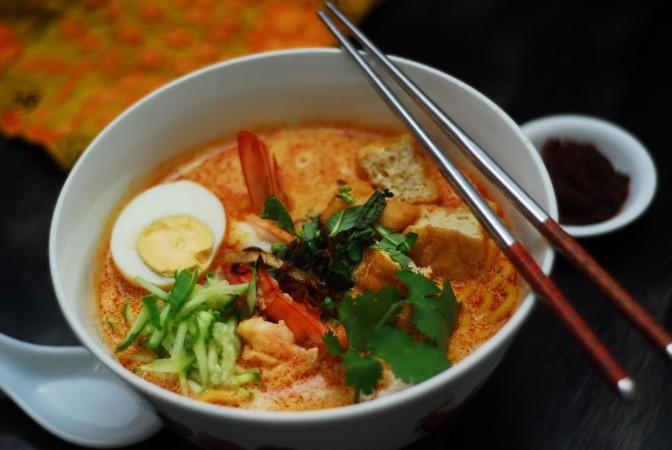
Nyonya Laksa - © Kuali
Festivals & Local Celebrations
Fiesta San Pedro
Time of Year: June 24 to June 29
Fiesta San Pedro is a lively, week-long celebration hosted by Malacca’s Portuguese-Eurasian community to honor St. Peter, the patron saint of fishermen. The event is filled with colorful parades, traditional music, dances, fun fairs, and a unique boat festival. One of the most memorable moments is the solemn procession where St. Peter's statue is carried through the streets, highlighting the community’s deep connection to their fishing heritage.
Chinese New Year
Time of Year: January or February (based on the lunar calendar)
Chinese New Year in Malacca is a major celebration, bringing the city to life with dragon and lion dances, fireworks, and cultural performances. The streets of Chinatown are decked out in red lanterns and decorations, creating an exciting atmosphere. It's a perfect time to experience the rich cultural heritage of Malacca’s Chinese community.
Malacca River Festival
Time of Year: Typically May or June
The Malacca River Festival celebrates the historical significance of the Malacca River. Visitors can enjoy river parades, cultural performances, and traditional games. It’s a great opportunity to learn about the role the river has played in the city’s history while immersing yourself in the local culture.
Deepavali
Time of Year: October or November (based on the Hindu lunar calendar)
Deepavali, or the Festival of Lights, is a vibrant celebration in Malacca’s Indian community. Little India comes alive with oil lamps, colorful rangoli, and traditional Indian music and dance. The illuminated streets create a magical atmosphere, making it a must-see for visitors during this festive time.
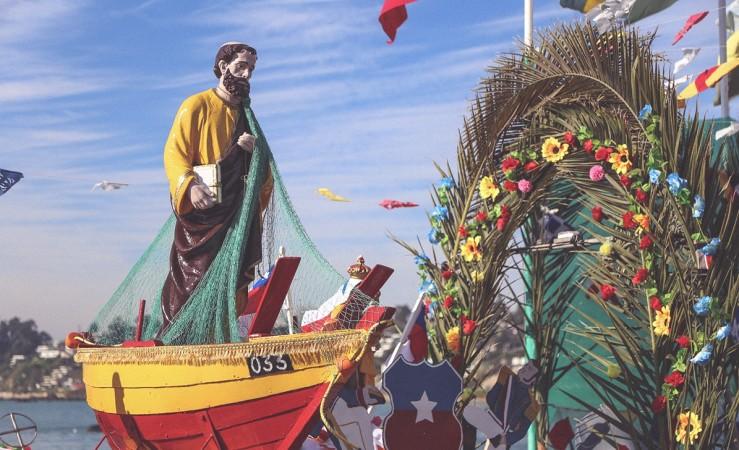
Fiesta San Pedro - © Ignacio Andree Muñoz Flores
Weather in Malacca City: Best Time to Visit
Malacca City, located in Malaysia, experiences a tropical climate with high temperatures and significant rainfall throughout the year. Here are the key weather patterns to help you plan the trip:
Temperature
- Malacca City has warm temperatures year-round, with average highs ranging from 88°F to 92°F (31°C to 33°C).
- The coolest months are January and February, with average lows around 75°F (24°C).
- The warmest months are May and June, with average highs around 91°F (33°C).
Rainfall
- Malacca City receives substantial rainfall across all months, with no distinct dry season.
- The wettest months are November and December, with average rainfall exceeding 9 inches (230 mm).
- The driest months are February and March, with average rainfall around 3-5 inches (75-130 mm).
Humidity and Sunshine
- Humidity levels remain high throughout the year, averaging 77-85%.
- Sunshine duration varies from 6 to 11 hours per day on average, with the most sunshine in March and April.
Best Time to Visit
- Malacca City can be visited year-round, as temperatures are consistently warm and rainfall is spread throughout the year.
- The drier months of February and March may be slightly more comfortable for outdoor activities.
- However, the wettest months of November and December can still be enjoyable, with fewer crowds and lower prices.
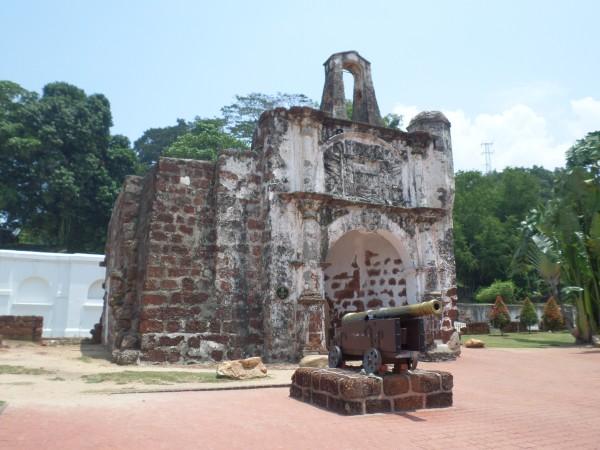
A' Famosa - © Chongkian
Culture Etiquette in Malacca
Footwear Customs
In Malaysia, it's customary to remove your shoes before entering homes, temples, mosques, and even some buildings. This tradition is all about showing respect and maintaining cleanliness, so keep this in mind when you're visiting.
Greeting Etiquette
A light handshake followed by placing your right hand over your heart is a common greeting that shows sincerity. However, it's important to be mindful, especially with Muslims. Some, particularly women, may prefer not to shake hands with the opposite sex, so it's best to let them take the lead when greeting.
Public Behavior
Public displays of affection aren't really welcomed in Malaysia, especially in more conservative areas. It's better to save those affectionate moments for private settings.
Religious Sites
If you're visiting mosques, temples, or other religious spots, make sure to dress modestly. Be sure to remove your shoes where required and look out for signs indicating areas that might be off-limits to visitors.
Respect for Elders
Addressing older individuals as "uncle" (pak cik) or "aunty" (mak cik) is a great way to show respect. This term of endearment is widely used, even if the person isn't a relative.
Dining Etiquette
If you're enjoying a traditional meal and eating with your hands, remember to use your right hand. In many Asian cultures, the left hand is considered unclean, so it's a small gesture that goes a long way.
Gift-Giving
Bringing a small gift (known as buah tangan) when visiting a Malaysian home is a thoughtful way to show respect for local customs. It’s a simple yet appreciated gesture.
Cultural Sensitivity
Malacca is a melting pot of cultures, blending Malay, Chinese, Indian, and European influences. As you explore, be mindful and respectful of the diverse traditions you’ll encounter.
Dress Code
Modest dressing is key, especially when you're visiting religious sites or more traditional areas. It’s a sign of respect and goes a long way in showing that you’re mindful of local customs.
Celebrating the Mid-Autumn Festival, this event features moon cakes and lantern displays, symbolizing family reunion and happiness.
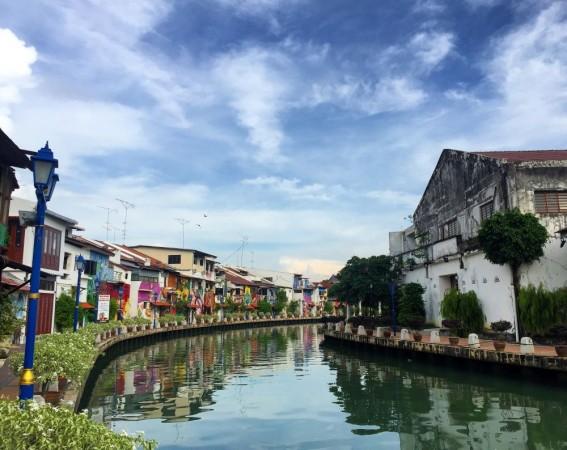
Melaka river - © gather
Essential Travel Information
Getting to Malacca
- From Kuala Lumpur:
Bus: The most economical and efficient way to travel from Kuala Lumpur to Malacca is by bus, which takes about 2.5 hours. Buses depart from Terminal Bersepadu Selatan in Kuala Lumpur.
- Private Transport:
Taxis and private car hires are available for a more comfortable journey, though traffic can affect travel time.
- From Singapore:
Bus: Buses from Singapore to Malacca take approximately 3 to 4 hours, depending on traffic and border crossing times.
Airport Transfers
- Malacca International Airport: Transfers can be pre-booked through services like Taxi2Airport, offering a range of vehicles from sedans to minibuses. This service provides 24/7 availability and can be booked online for convenience.
- From Kuala Lumpur Airport: Suntransfers offers low-cost, flight-tracked private taxi services from Kuala Lumpur Airport to Malacca, ensuring a direct and hassle-free journey to your accommodation.
Public Transit
- Melaka Sentral: This is the main bus and taxi terminal in Malacca, providing services within the city and to other parts of Peninsular Malaysia. It is a hub for local and intercity buses.
- Monorail: The Malacca Monorail operates along the Malacca River, offering a unique way to see the city. It runs from 10:00 am to 10:00 pm on weekdays and until midnight on weekends.
Taxis and Ride-Sharing
- Taxis: Executive taxis with varying seating capacities are available for hire. Limousine services are available for travel to Singapore, while other taxis serve destinations within Malaysia.
- Ride-Sharing: Services like Grab operate in Malacca, providing a convenient alternative to traditional taxis for getting around the city.
Water Transportation
- Malacca River Cruise: This is a popular tourist attraction, offering scenic views of the city from the water. Cruises run along the Malacca River, marking the border between historic Chinatown and the Malay area.
ATM and Banking Services in Malacca
Finding banking services and ATMs in Malacca is pretty straightforward. ATMs are easily accessible in tourist hotspots, shopping malls, and near bank branches. Major banks like Maybank, which has the largest ATM network in Malaysia, make it simple to grab some cash whenever you need it. While many ATMs run 24/7, some may have restricted hours for security reasons, so it’s always good to double-check if you're planning a late-night withdrawal.
If you need more than just an ATM, HSBC’s branch at No 777 Jalan Hang Tuah offers full services, including counter service, a Premier Centre, and 24-hour ATM access. Most Malaysian ATMs accept MasterCard (Cirrus and Maestro) and Visa (Plus) cards, but make sure to do your transactions in Malaysian Ringgit to avoid extra fees and get the best exchange rates.
Accommodation Choices in Malacca
Malacca has a wide range of accommodation options to suit different preferences and budgets. Here’s a breakdown of some popular choices:
- Luxury Hotels:
If you're looking for an upscale experience, Malacca’s luxury hotels offer high-end amenities and services, often situated close to the city’s key attractions. Perfect for those who want to indulge in comfort while being near all the action.
- Boutique Hotels:
For a more personalized stay, boutique hotels are the way to go. These charming accommodations often feature unique decor and offer a deeper connection to Malacca’s rich culture and history. They’re typically located in the historic parts of the city, giving you an immersive local experience.
- Budget Hotels and Hostels:
Ideal for budget-conscious travelers and backpackers, these accommodations offer basic amenities at affordable rates. Whether you're just passing through or staying for a while, they provide everything you need without breaking the bank.
- Homestays and Guesthouses:
For a more authentic experience, homestays and guesthouses are a fantastic option. Staying with locals gives you a firsthand look at Malaccan hospitality and daily life, offering a more intimate and meaningful way to experience the city.
Articles for you

Explore Yala National Park - Sri Lanka Travel, Asia
Tucked away in Sri Lanka’s southeastern corner, Yala National Park is where wild nature meets deep tradition. Known worldwide for its leopard population, the park is also home to elephants, sloth bears, crocodiles, and hundreds of bird species. Beyond wildlife, Yala opens doors to a cultural landscape dotted with ancient temples, Buddhist ruins, and coastal villages. For travelers seeking more than just a safari, Yala offers a chance to explore eco-tourism, local communities, and sacred heritage sites.
Population: The Yala National Park area doesn’t have a human population.
Economy: The economy around Yala National Park thrives on a blend of eco-tourism, agriculture, and local services. Safari tours, eco-lodges, and cultural experiences drive steady income for nearby towns like Tissamaharama and Kataragama, supporting thousands of families.
Landmarks: Famous for Block I of Yala and wildlife encounters, including elephants, sloth bears, crocodiles, and exotic bird species.

Explore Galle - Sri Lanka Travel, Asia
Nestled on Sri Lanka’s southern coastline, Galle is a vibrant city where history meets the sea. Its cobbled streets, colonial architecture, and serene beaches make it a must-visit destination for travelers seeking a blend of culture, adventure, and relaxation. A UNESCO World Heritage site, Galle captivates visitors with its Dutch Fort, bustling markets, and friendly locals. Whether you’re exploring the ramparts at sunset or savoring fresh seafood by the shore, Galle promises an unforgettable journey into Sri Lanka’s heritage.
Population: Approximately 113,000 in 2023.
Economy: Galle’s economy thrives on tourism, trade, and fisheries. The city’s historic fort, colonial architecture, and coastal charm draw thousands of international visitors each year, making tourism its main economic driver. Fishing remains vital for local livelihoods, supplying fresh seafood across the region.
Landmarks: Famous for the Galle Fort, Dutch Reformed Church & Maritime Museum, and Unawatuna Beach.

Explore Bentota - Sri Lanka Travel, Asia
Nestled along Sri Lanka’s southwestern coast, Bentota is a tropical paradise that blends golden beaches, vibrant culture, and thrilling adventures. Famous for its calm waters, luxury resorts, and scenic river estuary, Bentota has become a top destination for travelers seeking both relaxation and authentic experiences. From serene beach walks at sunrise to adrenaline-pumping water sports, this coastal town offers a perfect balance of leisure and exploration. With its proximity to Colombo and Galle, Bentota is easy to reach, making it an ideal stop for both short escapes and extended holidays.
Population: Approximately 37,000 in 2023.
Economy: Bentota’s economy thrives mainly on tourism, which drives local businesses such as hotels, restaurants, and wellness retreats. The town also benefits from fishing, coconut cultivation, and handicrafts like wood carving and batik textiles. Many residents rely on the growing demand for water sports and Ayurvedic treatments, making tourism the backbone of both income and employment in the area.
Landmarks: Famous for Bentota Beach, Bentota River Safari, and Kande Vihara Temple.

Explore Mirissa - Sri Lanka Travel, Asia
Mirissa is a charming coastal town on Sri Lanka’s southern shoreline. Known for its golden beaches, turquoise waters, and vibrant marine life, it has become a must-visit stop for travelers exploring the island. Many come for whale watching, surfing, and sunset views at Coconut Tree Hill, but Mirissa offers much more than postcard beauty. The fishing boats you see anchored by the bay carry generations of stories. Local traditions, delicious cuisine, and a laid-back rhythm of life shape every visitor’s experience.
Population: Approximately 4,700 in 2023.
Economy: Mirissa’s economy is largely shaped by its coastal location. Fishing has long been the backbone of local livelihoods, with generations relying on the Indian Ocean for income. In recent decades, tourism has become the main driver of growth, thanks to whale watching, surfing, and beachside hospitality.
Landmarks: Famous for Mirissa Beach, Coconut Tree Hill, and Parrot Rock Bridge.

Explore Nuwara Eliya - Sri Lanka Travel, Asia
Tucked away in the Central Highlands of Sri Lanka, Nuwara Eliya is often called “Little England”. With its rolling tea plantations, cool misty mornings, and colonial charm, this mountain town feels like a step into another world. Travelers come here to breathe fresh air, walk through flower gardens, sip the finest Ceylon Tea, and enjoy a pace of life far from the island’s busy cities. Whether you’re drawn by scenic landscapes, heritage architecture, or the warmth of its people, Nuwara Eliya is a destination that blends nature, culture, and history in perfect harmony.
Population: Approximately 781,000 in 2023.
Economy: Nuwara Eliya’s economy thrives mainly on tea production, as it sits in the heart of Sri Lanka’s central highlands, famous worldwide for Ceylon Tea. The city also benefits from a growing tourism industry, attracting visitors with its colonial charm, cool climate, and scenic landscapes.
Landmarks: Famous for Gregory Lake, Hakgala Botanical Garden, and Victoria Park.

Explore Sukau - Malaysia Travel, Asia
Nestled on the banks of the Kinabatangan River in Sabah, Malaysian Borneo, Sukau is a destination where wildlife, culture, and conservation come together. Known as one of Asia’s top spots for river safaris and eco-tourism, this quiet village offers a front-row seat to encounters with Bornean orangutans, pygmy elephants, proboscis monkeys, and exotic birdlife.
Population: Approximately 1,400 in 2019.
Economy: Sukau’s economy is shaped by its riverine location and natural resources. Traditionally, the Orang Sungai community relied on fishing, small-scale farming, and forest gathering for their livelihood. Today, the village has shifted toward eco-tourism, with river cruises, jungle trekking, and homestays providing income.
Landmarks: Famous for the Kinabatangan River cruises, Gomantong Caves, and Ox-bow lakes and wetlands.
